|
|
BRIEF HISTORY OF THE MANTA SHAPE - Page 4 Compiled 2005 - 2006 |
|
|
BRIEF HISTORY OF THE MANTA SHAPE - Page 4 Compiled 2005 - 2006 |
NAVIGATION
|
... SIDESTEP: HORN AND MANTA INTO "SPANISH DANCER" (concluded)
If "The Floppy Horn" conveyed gentle sensations of a briar gracefully curling around itself, these Spanish Dancers flow in many directions at once, with swirls and eddies of energy, as though their clothing was billowing and flapping with abandon around the swaying movement of their bodies. The effect is at once dynamic and decorative - like a mixture of modern, even expressionist sculpture and rococo architecture. |
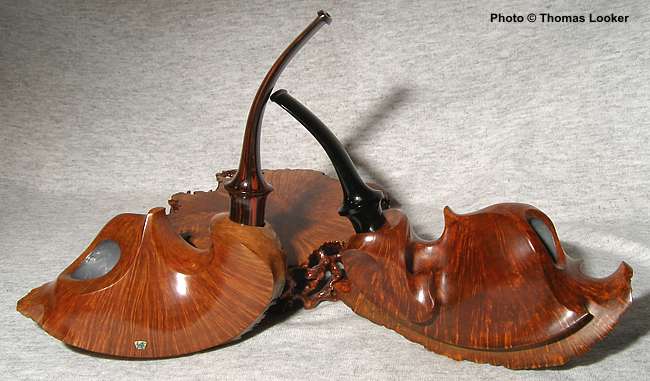

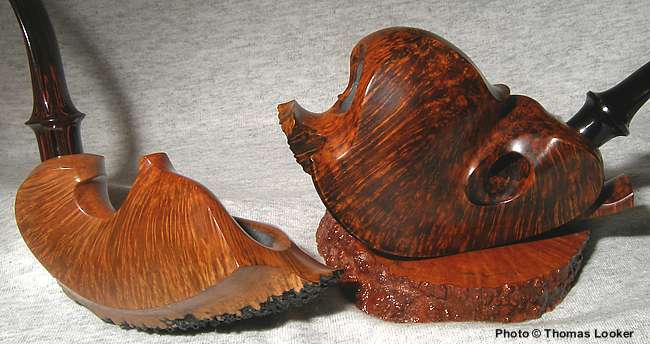

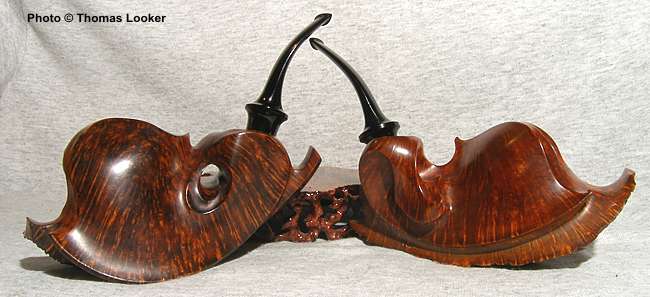

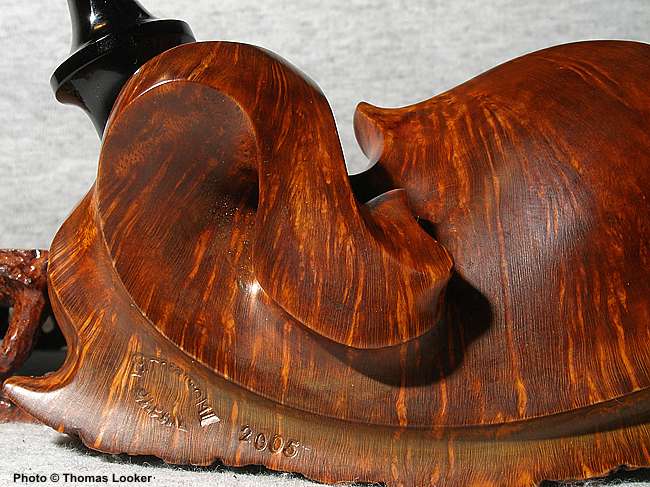
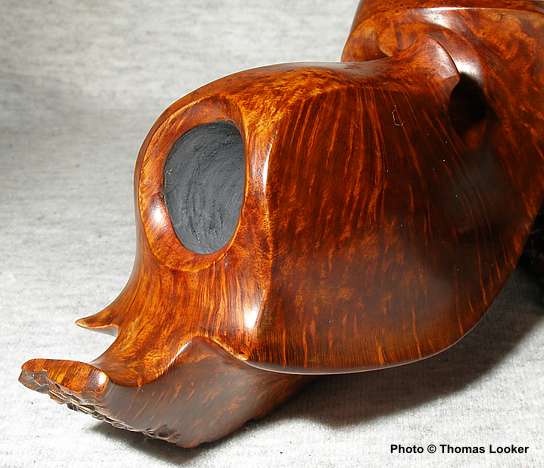
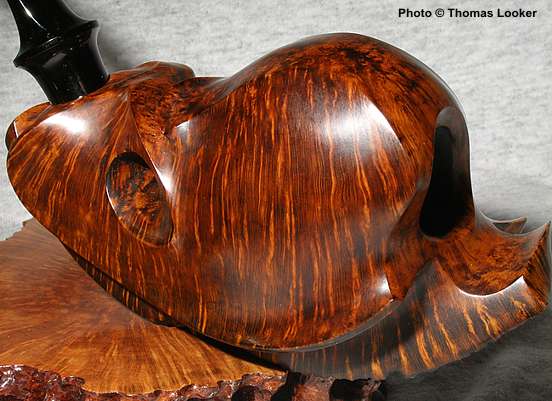
|
In overall design, "Spanish Dancer" melds a Manta-shaped base with an more upright and horn-like upper bowl. |

Left and Center: "Spanish Dancers," SPC 387 and 392. Right: Manta, SPC 326
|
All three pipes demonstrate the characteristic Manta outline: the widened front, tapered middle, and slightly-flared rear, all held together by broad, graceful curves on the sides, and sharper arcs in the front.
A sharply-defined middle ridge traverses the base of a Manta. Note how in the "Spanish Dancers," Toku combines this fluid middle ridge with a more contained and horn-like bottom. |
|
The ridge in SPC 326 lies along the curving axis of the entire pipe.In SPC 387 and 392, the curving ridge cuts across the pipe's axis, which is much straighter, fore-and-aft, than in a "full" Manta.) |
|
|
"Spanish Dancers," SPC 387 and 392.
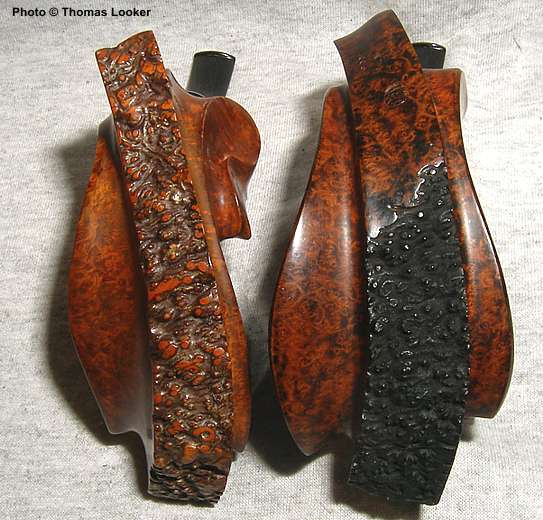
|
I used Western terminology to talk about the "Spanish Dancers," saying they brought to mind expressionist art and the Rococo. I'm sure there are more appropriate ways of understanding these compositions through classic Japanese artistic traditions, and in another Pipe Study I compare some of Toku's drapery-like lines and forms with wood carvings by Takamura Ko'un, a late-19th, early 20th-century Japanese sculptor whose works inspired Toku when he was a student. |
|
|
PICTURES OF TOKU'S FIRST MANTA CONTINUE ON THE NEXT PAGE
NAVIGATION
END OF
BRIEF HISTORY OF THE MANTA SHAPE - 4